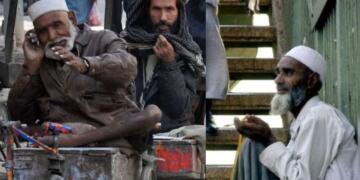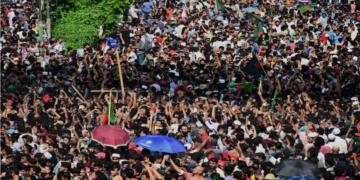“अथ श्री महाभारत कथा..”
“मैं समय हूँ..”
If you haven’t heard these quotes in your childhood, believe me, your childhood was far from awesome. The cultural influence that ‘Ramayan’ had on millions of Indians way back in 1987, was what ‘Mahabharat’ as a tele series had managed to achieve the following year, i.e., 1988. Though it was nowhere close to the original epic as penned down by the sage Ved Vyasa, an honest effort at least was made to bring the ethos to the screen, and the man who took the pains was none other than celebrated producer cum director Baldev Raj Chopra.
Baldev Raj Chopra was born on 22 April 1914 in the village of Rahon, situated in the district of Nawanshahr [now Shaheed Bhagat Singh Nagar], to Vilayati Raj Chopra, a PWD employee, who later shifted to Lahore. He was the second amongst several siblings, and one of his younger siblings was the popular filmmaker, Yash Raj Chopra.
After doing his post-graduation in English Literature from Punjab University, Lahore, Baldev Raj Chopra joined Cine Herald magazine in 1944 as a journalist. He rose in the ranks and decided to make a film of his own. His dreams were all set to fly high but when the Partition hit his interests real hard. Like many Hindus and Sikhs of that time, Baldev had to leave what he called his own in Lahore, and relocate to the new India in 1947. He had to restart from scratch, first in Delhi, and then in Bombay [now Mumbai], whence he restarted his film career in 1948.
Baldev Raj Chopra made his first foray into films with ‘Karwat’. However, he found success with the 1951 flick ‘Afsana’, which was a box office success. Since then, he didn’t look back. In 1955, he formed his own production company, BR Films. While it gave immeasurable successes like ‘Gumrah’, ‘Waqt’, ‘Kanoon’, ‘Insaan ka Kanoon’, ‘Taraazu’ to name a few, it also raised the eyes of a few through controversial films like ‘Naya Daur’, ‘Dhool ka Phool’, ‘Dharmputra’ etc., owing to their ideological bent towards communism, with films like ‘Dharmputra’ even blaming Hindus for their own miseries suffered during the Partition. It was another matter that Yash Chopra and B.R. Chopra parted ways after that ideologically, if not professionally.
However, there was one impeccable quality in Baldev Raj Chopra – his never-ending quest for experimentation. He continuously experimented with concepts, that were unheard of, and sometimes unacceptable in the Indian film industry, especially Bollywood. For instance, before the 80s, even mentioning about sexual assault was taboo. But through the much controversial ‘Insaaf ka Taraazu’, Baldev Raj Chopra set the dice rolling.
A couple of years later, in 1982, Baldev Raj Chopra came out with a much more controversial flick, ‘Nikaah’. Originally named ‘TalaaqTalaaqTalaaq’, ‘Nikaah’ still is one of the very few Indian films to have managed to raise fingers against the much infamous Islamic malpractice of Nikah Mut’ah, as well as the notorious Triple Talaq practice, for which the movie invoked the ire of the Islamic clerics.
But then came ‘Mahabharat’, which united the nation like nothing else. Broadcasted on Doordarshan from 1988 to 1990, the tele series made people glued to their television sets, irrespective of caste or creed. The source material was definitely not Ved Vyasa’s Mahabharata, since Draupadi did not cast jibes at Duryodhana as she did in the serial [it was Dharamveer Bharti’s handiwork for his creation, adopted by the makers]. Also, Vayuputra Bheema was aggressive and towering, he was definitely not the buffoon as purported in the serial. However, in an era when it was even a sin to mention the names of the two epics, an effort to portray the Mahabharata, one of the greatest creations in world literature, in an earnest way, is nothing less daunting, and for that, late Baldev Raj Chopra does deserve a pat on his back.































